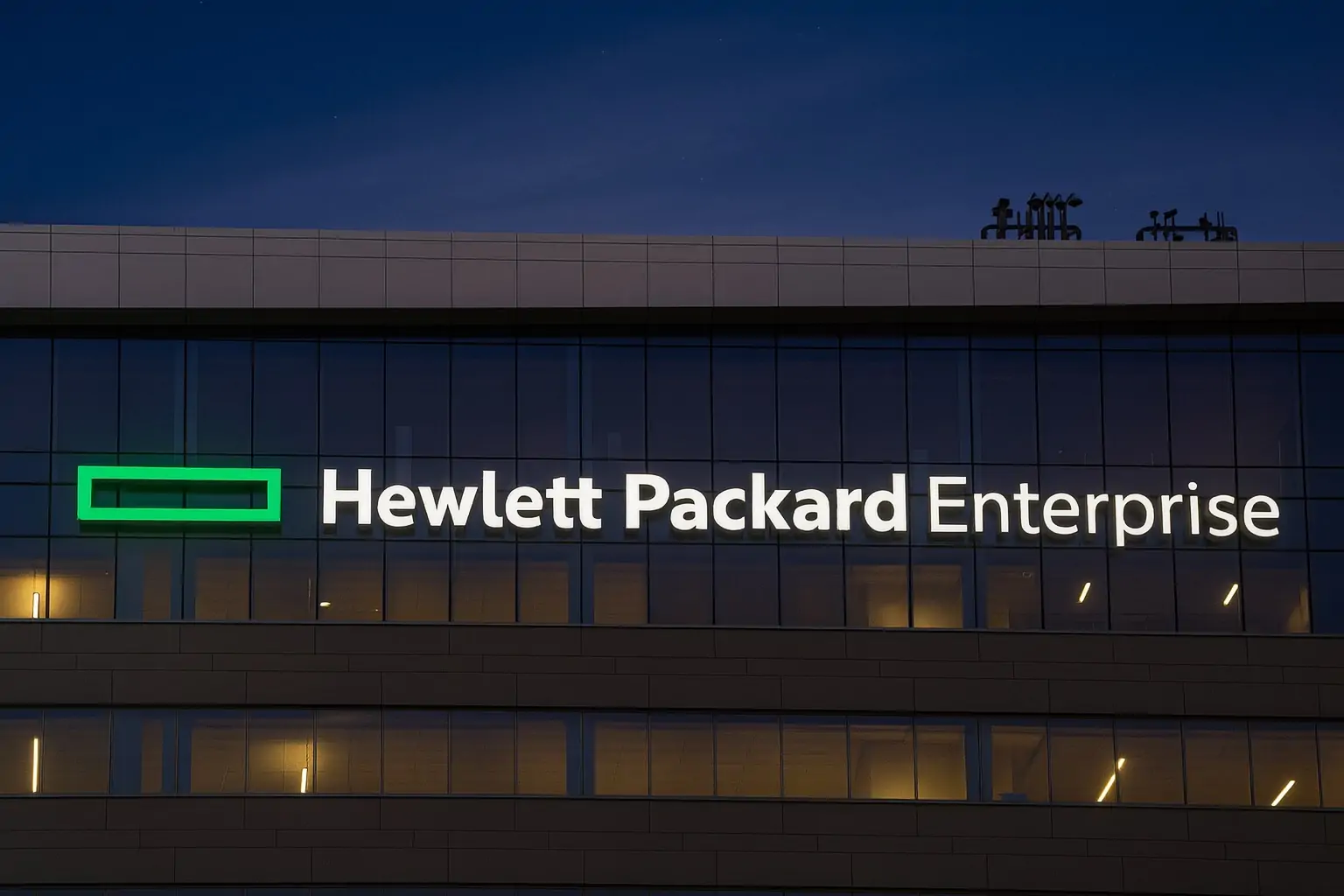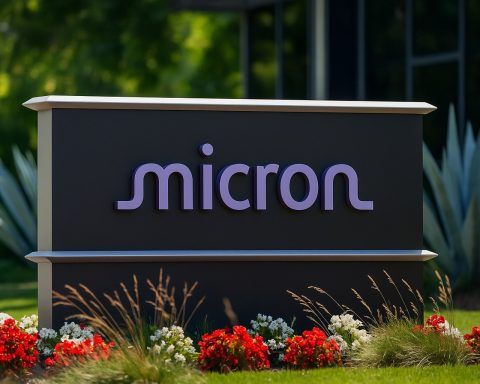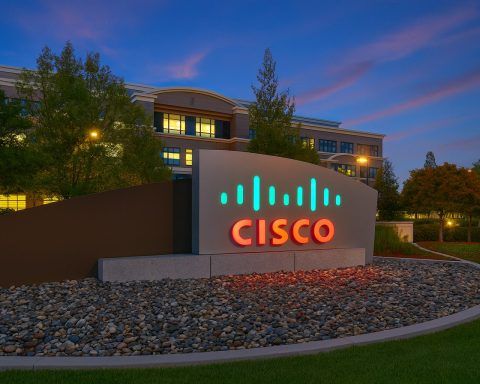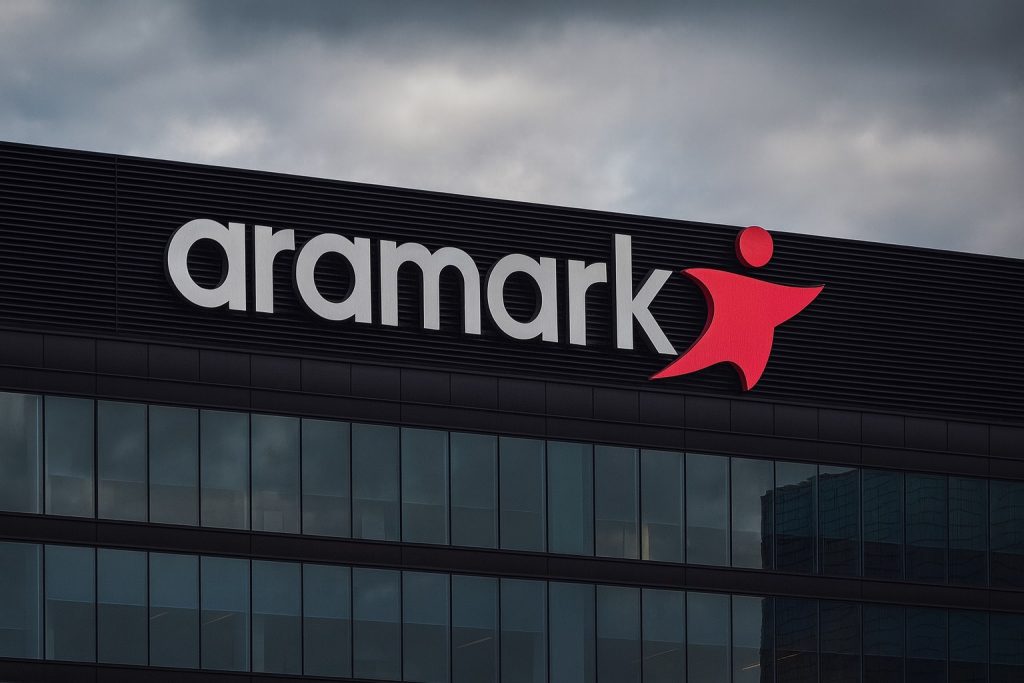Hewlett Packard Enterprise (NYSE: HPE) is in the spotlight today as Wall Street reacts to a fresh analyst downgrade, a major divestment in China, and ongoing bets on AI, hybrid cloud and supercomputing.
- Morgan Stanley cut HPE to “Equal-weight” from “Overweight” and lowered its price target to $25 from $28, citing a “memory supercycle” and integration risks tied to the Juniper Networks acquisition. [1]
- HPE shares traded sharply lower, down about 2.4% pre‑market to $22.29 and roughly 6.5% in regular trading, alongside other server makers. [2]
- HPE filed an 8‑K announcing a deal to sell a 10% stake in Chinese joint venture H3C Technologies for about $714 million, implying a roughly $7.1 billion equity valuation for H3C and leaving HPE with a 9% stake. [3]
- The company intends to fully exit H3C over time, reducing its operational and political exposure to China while sharpening its focus on AI, hybrid cloud and high‑performance computing (HPC). [4]
- Despite the sell‑off, HPE’s cloud and AI portfolio is still growing: the latest quarter showed 19.8% year‑over‑year revenue growth to $9.14 billion, even as EPS missed Wall Street estimates. [5]
HPE shares under pressure after Morgan Stanley downgrade
Hewlett Packard Enterprise started the week on the defensive as Morgan Stanley downgraded the stock to “Equal-weight” from “Overweight” and cut its price target to $25 from $28. The bank flagged what it called an “unprecedented” memory pricing cycle, with DRAM and NAND prices up roughly 50% to as much as 300% over the last six months, squeezing margins for hardware makers heavily exposed to server configurations. [6]
According to a Reuters note distributed via TradingView, HPE shares fell about 2.4% in pre‑market trading to $22.29 following the downgrade, with Morgan Stanley warning that rising memory input costs and a richer mix of AI servers could limit future margin expansion and positive estimate revisions. [7]
Live market coverage from Investopedia later reported that HPE and Dell were each down about 6.5% in regular trading after the bearish call on server stocks, contributing to a softer session for the broader tech sector. [8]
Beyond memory inflation, Morgan Stanley and other commentators highlighted execution risk around HPE’s $14 billion acquisition of Juniper Networks, pointing to the challenge of integrating legacy HPE networking, Aruba, and Juniper’s portfolio while still delivering promised cost synergies. [9]
Several pieces of analysis today – including coverage on TipRanks and Yahoo–framed the stock’s recent weakness as a combination of macro cost headwinds (memory prices), deal integration risk (Juniper), and near‑term margin compression, despite healthy top‑line growth. [10]
H3C stake sale: $714 million cash, $7.1 billion implied valuation
While the downgrade grabbed the headlines, HPE also quietly took a major strategic step in China.
In a Form 8‑K filed with the SEC this morning, the company disclosed that its wholly owned subsidiary, H3C Holdings Limited, entered into five share purchase agreements on 17 November 2025 with a consortium of buyers in the People’s Republic of China. [11]
Under those agreements:
- H3C Holdings will sell an aggregate 10% of the issued share capital of H3C Technologies Co., Limited (H3C) for cash consideration of approximately US$714 million. [12]
- The buyers include Unisplendour International Technology Limited (UNIS) and entities tied to China Cinda Asset Management, China CITIC Financial Asset Management, China Merchants Capital and China Great Wall Asset Management. [13]
- The transaction implies an equity valuation of about US$7.14 billion for H3C, according to analytical coverage that reverse‑engineered the 10% stake price. [14]
The sale is subject to multiple closing conditions, including:
- Regulatory approvals from relevant authorities in China
- Approval of certain documents by shareholders of Unisplendour Corporation Limited (UNIS’s parent)
- Absence of any laws or court orders blocking the deal
If those conditions aren’t met by the “Long Stop Date” – 180 days after 17 November 2025, extendable once by up to 30 days – either side can terminate, provided it is not in material breach of the agreement. [15]
Path to full exit from H3C
Today’s filing also sheds light on HPE’s longer‑term plan to exit H3C completely:
- After this 10% sale, HPE will retain a 9% stake in H3C.
- A side letter with UNIS confirms that UNIS has irrevocably waived its right of first offer on the shares being sold and clarifies how put and call options on the remaining stake can be exercised. [16]
- HPE states that it intends to dispose of its remaining 9% interest over time, either via its put option rights or through additional direct sale agreements. [17]
Analysts at GuruFocus and Panabee note that the divestiture simplifies HPE’s corporate structure and reduces its exposure to China, at a time when geopolitical risk and regulatory scrutiny around cross‑border tech investments remain elevated. They view the deal as consistent with HPE’s strategy to recycle capital into AI, cloud and networking assets closer to its core markets. [18]
Cloud and AI portfolio still gaining momentum
The negative sentiment today sits somewhat awkwardly next to HPE’s underlying growth story in cloud, AI and supercomputing.
A fresh research note from Zacks highlights that HPE’s hybrid cloud momentum is accelerating, driven by:
- HPE GreenLake expansion across storage, compute and data services
- New “Private Cloud AI” and AI Factory offerings aimed at enterprises that want on‑prem AI infrastructure with cloud‑like consumption
- Ongoing adoption of as‑a‑service models across HPE’s portfolio [19]
Zacks points out that HPE shares are up about 6.9% year‑to‑date, lagging the broader Computer – Integrated Systems industry but still positive in a choppy hardware tape. [20]
From a fundamentals standpoint, MarketBeat’s recap of HPE’s most recent quarter (reported in early September) notes that: [21]
- Revenue came in at $9.14 billion, beating analyst expectations of $8.77 billion and marking 19.8% year‑over‑year growth.
- EPS of $0.35 missed the $0.44 consensus, reflecting margin pressure and mix shifts.
- Management guided FY2025 EPS to a range of $1.88–$1.92 per share.
- The Zacks consensus for fiscal 2025 stands around $1.90, which would be about 4.5% lower year‑on‑year, underscoring the tension between robust top‑line growth and near‑term profitability. [22]
In other words: the growth engines are running, but they’re not yet fully offsetting cost inflation and investment in AI infrastructure and Juniper integration.
Supercomputing and SC25: HPE’s high‑end showcase
Parallel to today’s financial moves, HPE is leaning hard into its identity as an AI and supercomputing powerhouse.
Just days before SC25 (the annual Supercomputing conference), HPE announced new additions to its next‑generation HPE Cray supercomputing portfolio, citing “industry‑leading compute density” designed for large‑scale AI workloads and scientific simulation. [23]
On its SC25 event page, HPE highlights: [24]
- HPE Cray supercomputing systems
- HPE Private Cloud AI and related AI infrastructure
- HPE Alletra storage and HPE Juniper / Aruba networking as part of a full‑stack offering
The company is also pushing the Quantum Scaling Alliance, announced earlier this month, as a multi‑partner effort to make quantum computing more scalable and practical for real‑world workloads. [25]
A sponsored feature on The Register today, timed with SC25, describes HPE’s “blueprint for next‑generation supercomputing” — essentially combining AI‑optimized Cray systems, high‑speed interconnects and GreenLake consumption models in one stack. [26]
Taken together, these moves reinforce the strategic narrative Morgan Stanley itself acknowledges: HPE is not just a traditional server vendor, but a player trying to sit at the intersection of AI infrastructure, hybrid cloud and high‑performance networking. The question is whether rising component costs and integration complexity will temporarily obscure that story in earnings numbers.
Institutional flows and analyst sentiment: mixed but engaged
Despite today’s sell‑off, institutional investors are still active in the name.
MarketBeat reports that Vise Technologies Inc. opened a new HPE position worth about $472,000 in Q2, buying 23,059 shares, while several smaller firms also increased their holdings. Overall, about 80.8% of HPE’s stock is held by institutions and hedge funds, suggesting that the shareholder base remains largely professional. [27]
On the analyst side:
- MarketBeat’s tally shows one “Strong Buy,” eight “Buy,” twelve “Hold” and one “Sell” ratings, for an overall “Hold” consensus and an average target price around $25.41. [28]
- Reuters data today notes that 10 of 22 brokers rate the stock “Buy” or better and 10 rate it “Hold,” with a median price target of $26, broadly in line with the MarketBeat figures. [29]
New commentary from Zacks and TipRanks emphasizes that HPE’s trajectory now hinges on its ability to protect margins in the face of memory inflation, execute the Juniper integration, and redeploy H3C proceeds into higher‑growth AI and cloud opportunities. [30]
What to watch next for HPE
Looking beyond today’s volatility, here are the key catalysts and risk factors investors and customers are likely to track:
- Closing of the H3C 10% sale
- Regulatory approvals in China and the Long Stop Date window (180 days from today, with a possible 30‑day extension).
- How quickly HPE can realize the $714 million cash inflow and whether it signals additional steps to exit the remaining 9% stake. [31]
- Juniper Networks acquisition and integration
- Memory pricing and AI server margins
- The longevity of the current “memory supercycle” and whether DRAM/NAND prices stabilize or continue to surge into 2026. [34]
- HPE’s ability to pass through higher component costs, adjust configurations, or lean on software and services to defend gross margins.
- Execution in AI, cloud and supercomputing
- Adoption of HPE GreenLake, Private Cloud AI, and HPE Cray systems coming out of SC25 and the upcoming HPE Discover Barcelona event in December. [35]
- Customer wins in AI supercomputing and sovereign cloud, where HPE is positioning itself as a strategic partner.
- Upcoming earnings and guidance updates
- Whether management adjusts its FY2025 EPS range of $1.88–$1.92 in response to memory pricing, Juniper integration spending, or proceeds from asset sales. [36]
Bottom line
For 17 November 2025, HPE’s story is one of contrast:
- Near‑term pressure from a high‑profile downgrade and a painful reminder that even AI‑leveraged hardware vendors are exposed to commodity memory cycles.
- Longer‑term positioning as a company reshaping its geographic risk (H3C exit), doubling down on AI, hybrid cloud and supercomputing, and preparing to absorb a major networking acquisition.
How those two forces resolve will determine whether today’s sell‑off is remembered as a short‑term shakeout or the start of a deeper re‑rating.
This article is for informational purposes only and does not constitute investment, legal, or tax advice. Always do your own research and consider consulting a licensed financial professional before making investment decisions.
References
1. www.tradingview.com, 2. www.tradingview.com, 3. www.sec.gov, 4. www.sec.gov, 5. www.marketbeat.com, 6. seekingalpha.com, 7. www.tradingview.com, 8. www.investopedia.com, 9. www.sdxcentral.com, 10. www.tipranks.com, 11. www.sec.gov, 12. www.sec.gov, 13. www.sec.gov, 14. www.panabee.com, 15. www.sec.gov, 16. www.sec.gov, 17. www.sec.gov, 18. www.gurufocus.com, 19. www.zacks.com, 20. www.zacks.com, 21. www.marketbeat.com, 22. www.marketbeat.com, 23. www.hpe.com, 24. www.hpe.com, 25. www.hpe.com, 26. www.theregister.com, 27. www.marketbeat.com, 28. www.marketbeat.com, 29. www.tradingview.com, 30. www.zacks.com, 31. www.sec.gov, 32. www.reuters.com, 33. www.sdxcentral.com, 34. www.sdxcentral.com, 35. www.hpe.com, 36. www.marketbeat.com







